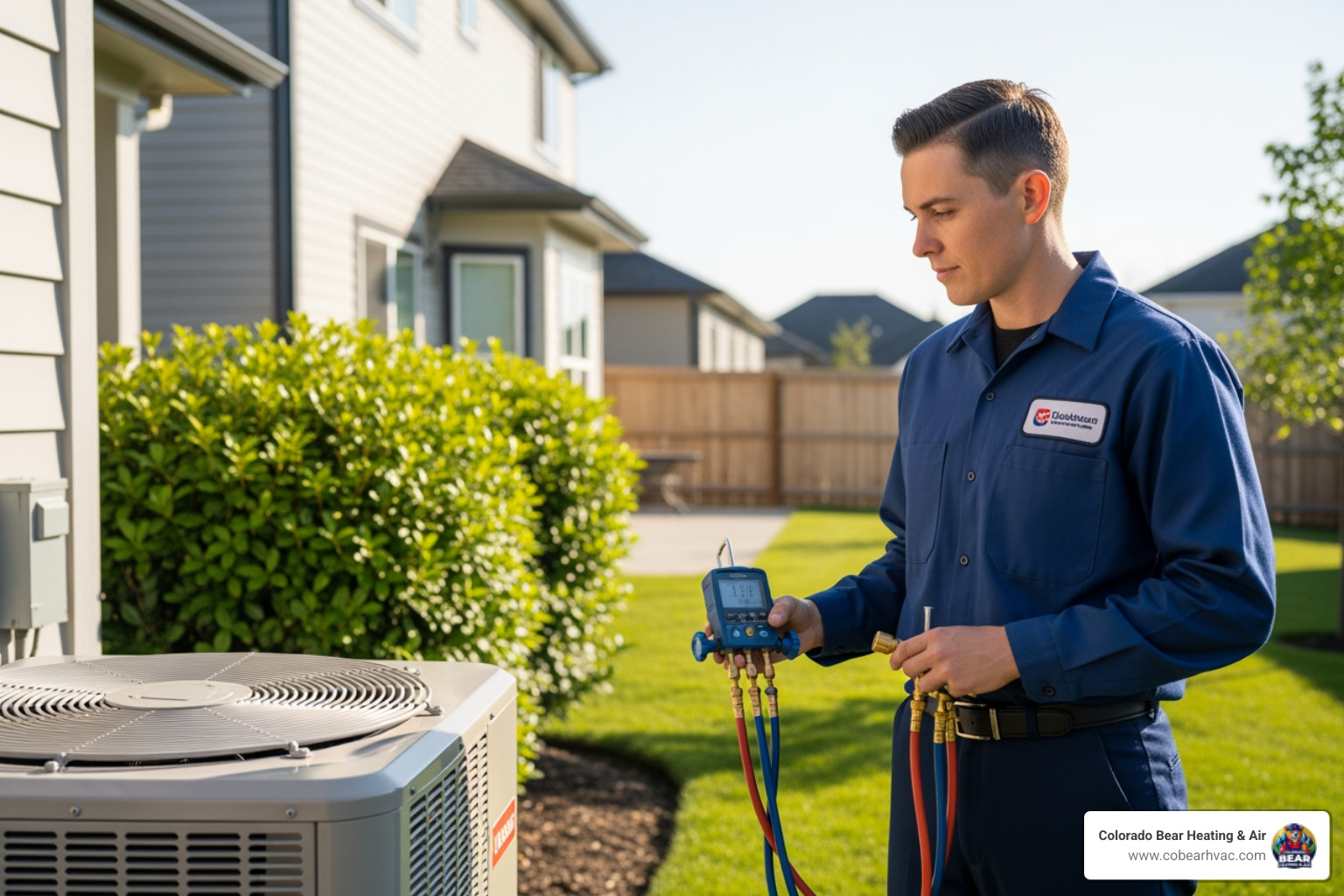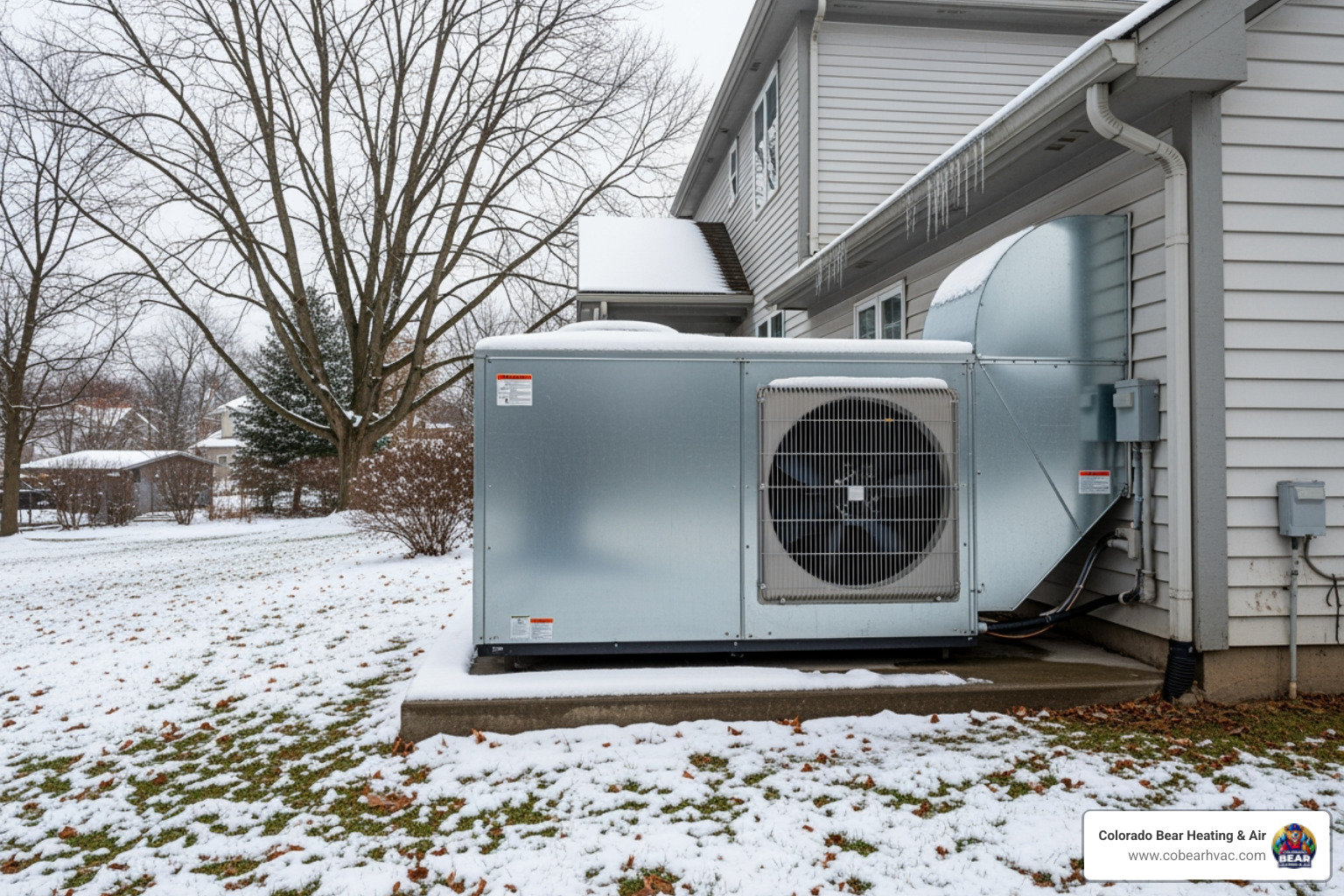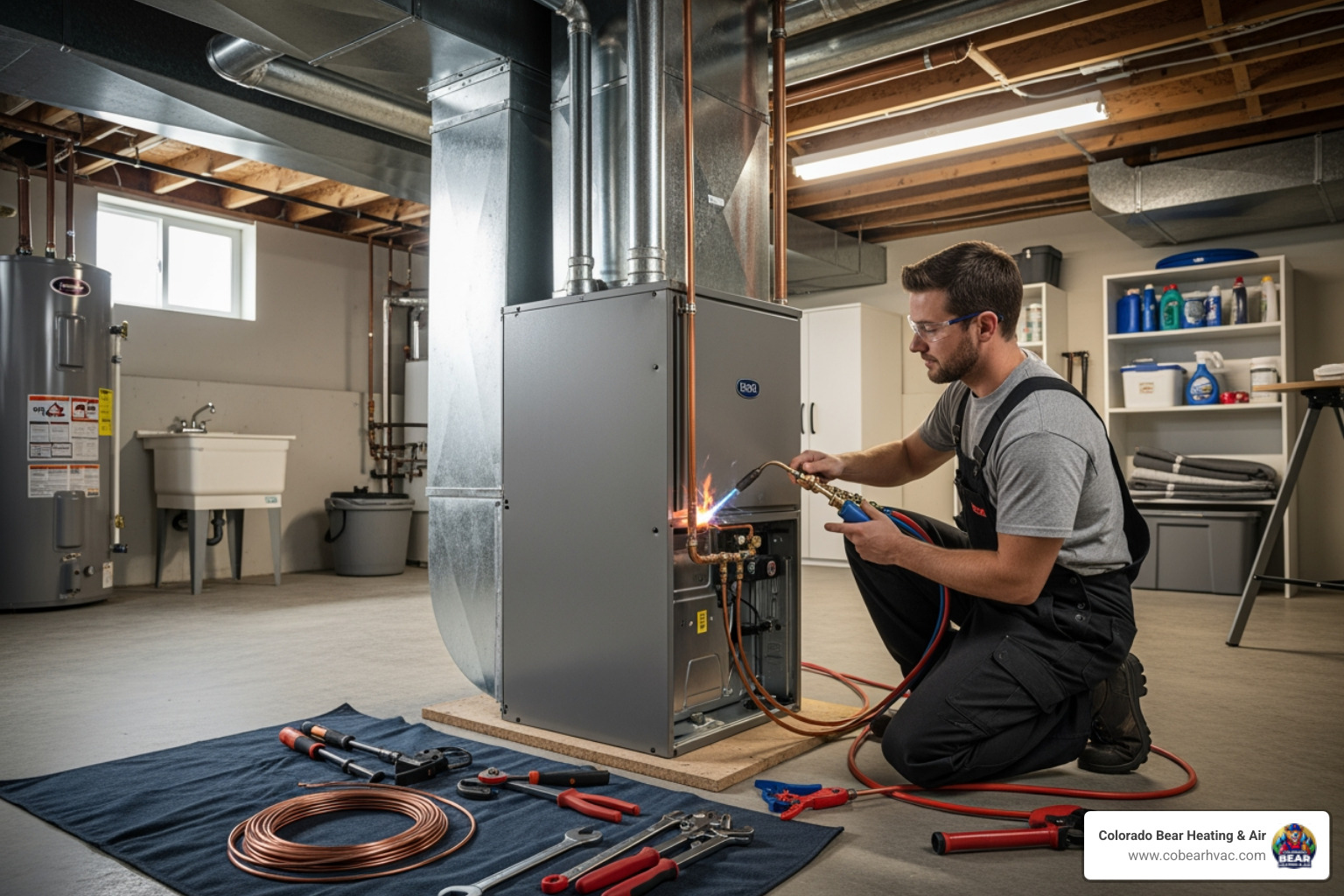


When a heat pump starts giving off weak airflow or it struggles to keep your home cool in Castle Rock's summer heat, refrigerant pressure issues might be to blame. These problems often creep up gradually, until one day your system just doesn’t perform like it used to. Homeowners usually notice something’s off when rooms aren’t cooling evenly, the outdoor unit is running longer than normal, or the system starts making unusual noises. If these signs are ignored for too long, they can lead to much larger system failures and pricey repairs during the peak of cooling season.
Understanding what refrigerant pressure does, why it matters, and how to spot a problem early on can save you some real stress. Heat pumps rely on the correct balance of refrigerant to move heat from one place to another. When pressure is too high or too low, that balance gets disrupted and the entire system suffers. If you’ve been running into inconsistent cooling or frequent breakdowns, it may be time to explore the root of those refrigerant problems and what it takes to fix them.
Understanding Heat Pump Refrigerant Pressure Issues
Refrigerant is the substance inside your heat pump that transfers heat from inside your home to the outdoors in summer. For that transfer to work properly, the refrigerant needs to be at the correct pressure. If the pressure is either too high or too low, the system’s efficiency drops and cooling becomes unreliable. Sometimes these issues build up over time and go unnoticed until performance really starts to slip.
These are some signs that your heat pump may be facing refrigerant pressure problems:
- Air coming from vents feels warm, even when the system is set to cool
- The heat pump runs constantly but can’t reach the thermostat setting
- Ice builds up on the indoor or outdoor coils
- You hear hissing, bubbling, or high-pitched noises coming from the unit
- Your energy bills rise even though your usage stays the same
More than just reducing comfort, incorrect refrigerant pressure can place strain on other internal parts like the compressor. Over time, this can lead to damage that’s not quick or inexpensive to repair. Proper refrigerant levels help keep a system running the way it should—quietly, efficiently, and evenly across your home.
Causes of Refrigerant Pressure Problems
There are several reasons refrigerant pressure might be off, and identifying the exact cause allows the right repair to happen faster. In most homes in Castle Rock, these issues trace back to one or more of the following:
1. Leaks in the refrigerant line – Over time, joints or coil surfaces can develop tiny holes where refrigerant slowly escapes.
2. Blockages – Dirt, debris, or corrosion inside the system can restrict the flow of refrigerant, causing the pressure to change.
3. Moisture in the system – If the lines weren’t properly sealed during a past service, moisture can enter and interact with the refrigerant, forming acids that damage the internal components.
4. Incorrect refrigerant charge – If the system was installed or serviced without the right amount of refrigerant, pressure problems can show up almost immediately.
5. Worn or malfunctioning parts – Certain valves or sensors control how refrigerant moves through the unit. If they aren't working properly, refrigerant pressure won’t stay stable.
One example from a Castle Rock homeowner involved a slow refrigerant leak near the outdoor unit that had gone unnoticed for months. By the time they called for help, their heat pump could no longer cool the upper level of their home. Once the leak was identified and sealed, and the refrigerant level rebalanced, the system’s performance quickly improved.
Understanding the most common causes helps you take action sooner, especially when your system shows small warning signs that something’s wrong.
Diagnosing Pressure Problems
Diagnosing refrigerant pressure issues isn’t about guessing. It requires the right training and equipment. Homeowners may notice symptoms like poor airflow or ice on the coils, but figuring out precisely what’s wrong means checking the system’s internal pressures. Our professionals handle this by running a series of checks that confirm whether low or high-pressure readings are present.
Here’s how the diagnostic process generally works:
1. Evaluate system behavior while it’s running
2. Inspect coils and refrigerant lines for visible leaks or ice
3. Use pressure gauges to record suction and discharge readings
4. Compare actual measurements to manufacturer specs
5. Assess if there’s adequate airflow and unrestricted refrigerant circulation
If there is a leak, our professionals will look for oil stains or use refrigerant leak detectors to find the exact location. These tools are highly sensitive and can detect even small drops in refrigerant levels. In cases where pressure is high, it’s often due to a blockage or overcharging. Our technicians work through each possible cause until they have a clear picture of what’s disrupting the system’s balance.
It is very important for homeowners in Castle Rock to stay out of these systems while diagnosis is being handled. Pressurized refrigerants and electrical components can pose serious safety risks. Getting the help of experienced professionals means the system is tested correctly and returned to a safe, serviceable condition.
Repairing Refrigerant Pressure Issues
Once the issue has been confirmed, repair depends on what’s causing the problem. Some cases are as straightforward as sealing a small leak. Others might require a deeper internal vacuum and refrigerant recharge to reset the system properly. Our technicians follow manufacturer guidelines to ensure the correct procedures are used with every model.
Here’s what common repair steps look like:
- For leaks: Locate the damaged spot, seal or replace the line, and recharge the system to the proper pressure.
- For blockages: Flush out the contaminated areas, replace clogged components like the expansion valve if needed.
- For overcharged systems: Safely remove the excess refrigerant and reset the correct amount.
- For moisture or contamination: Evacuate the system completely and recharge using clean, filtered refrigerant under the right pressures.
Repairs should always be followed by a test cycle to confirm normal pressure levels and stable operation. After the repair, it’s a good idea to schedule a quick follow-up in the weeks ahead, especially after major refrigerant work. This confirms the issue is fully resolved and the system is holding steady during higher outdoor heat loads.
Ensuring Long-Term Efficiency
To reduce the chance of running into refrigerant pressure issues again, homeowners in Castle Rock should focus on routine care. A heat pump that’s checked on a regular basis gives better performance year-round and doesn’t land you in the middle of emergency service calls during the hotter months.
Some simple homeowner actions can make a difference:
- Replace air filters every 1 to 2 months during peak cooling season
- Keep outdoor condenser units free of dirt, grass, and leaves
- Trim vegetation away from the system to allow proper airflow
- Listen for changes in sounds or cooling speed
- Set thermostat to a consistent temperature that doesn’t overwork the system
More technical checks like refrigerant pressure testing, cleanliness of the evaporator and condenser coils, and electronic control settings should be left to our professionals during scheduled maintenance appointments. These deeper inspections help catch subtle issues before they become disruptive.
If you’re noticing minor performance drops or it’s just been a while since your last system evaluation, now is a smart time to book a preventative check-up. Waiting until a full shutdown can limit your repair options and reduce your comfort when you need your heat pump working the most.
Keep Your Heat Pump Running Smoothly in Castle Rock
Refrigerant pressure problems can turn your heat pump into a constant frustration when summer temperatures rise. If left alone too long, they end up reducing your system’s lifespan and driving up utility costs. Catching the issue early and getting it handled by trained professionals is the most effective way to keep your home cool and comfortable.
Whether it's a common refrigerant leak or a more complicated internal issue, the key is acting as soon as you notice something isn’t right. Ongoing upkeep goes a long way, especially during hotter months when your system works harder. Regular maintenance and accurate repairs will keep your system stable, efficient, and ready to perform throughout Castle Rock’s heatwaves.
To ensure your system continues running at peak performance and avoids costly breakdowns during the summer heat in Castle Rock, trust Colorado Bear Heating & Air for expert solutions like heat pump repair in Castle Rock. If you’ve noticed signs of refrigerant pressure issues or reduced cooling, our team is ready to help. For a quick estimate or to book a service visit, please contact us today.
Latest blogs

Apply now for flexible payment options
Get a decision in seconds with no impact to your credit score.



Testimonials
Service Areas
If you’re in Colorado Springs, The Mountains, or nearby areas, call us to confirm availability for installations.
.avif)















.avif)
.avif)
.avif)





